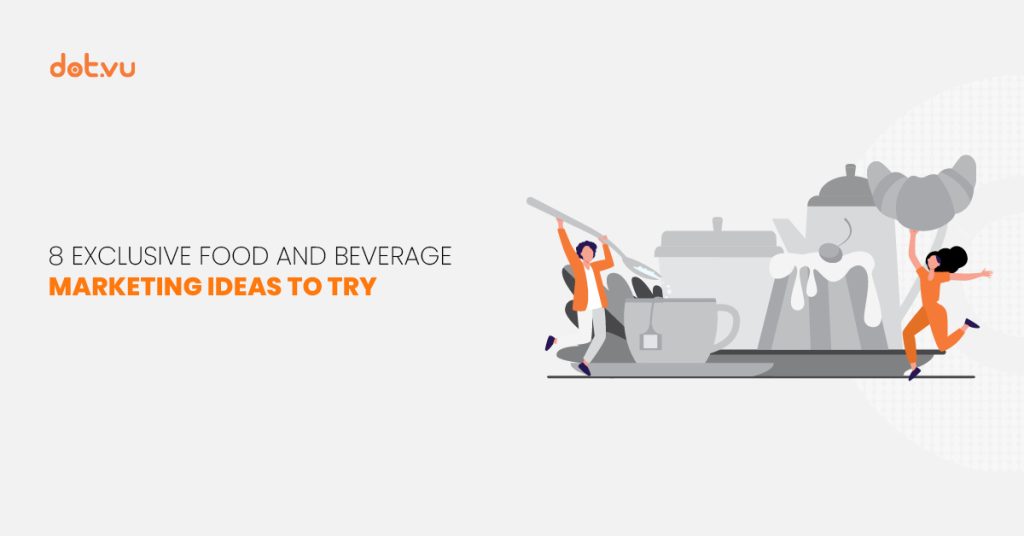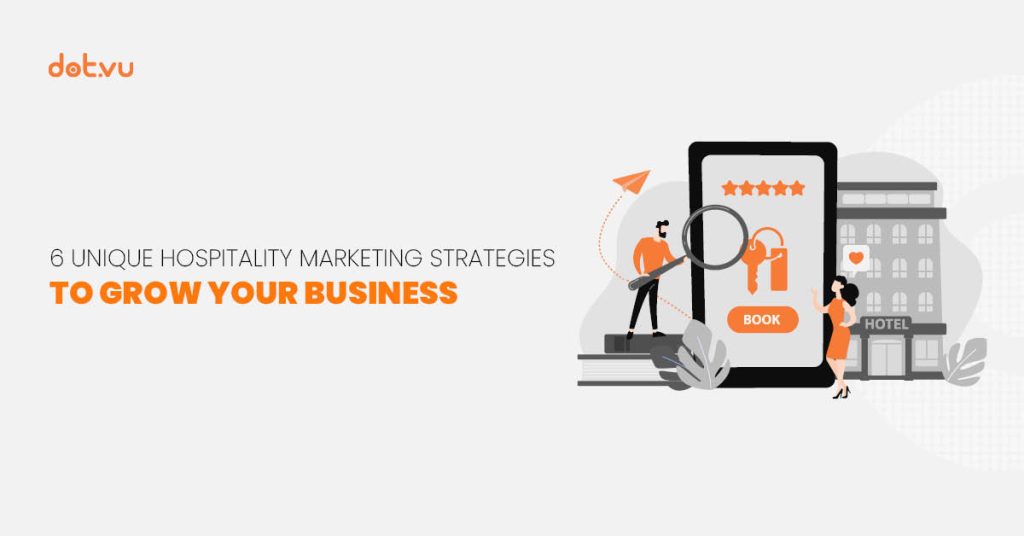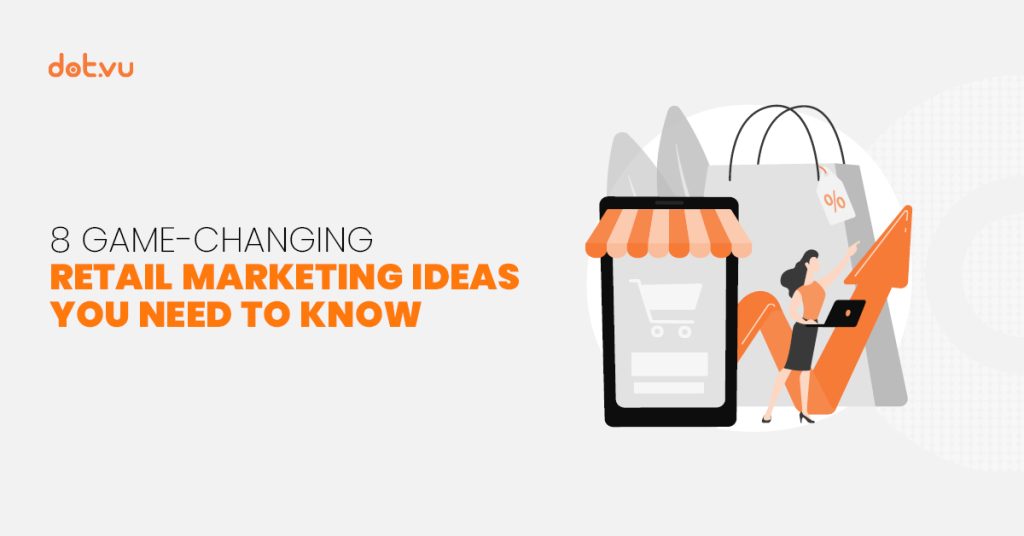
The beauty industry, known for its rapid growth and intense competition, requires more than just standout products to thrive. In a market where countless brands vie for attention, a robust marketing strategy is essential for any beauty business, whether a startup or a well-established name, to make a lasting impression.
Beyond having a unique selling proposition, it’s crucial to communicate your brand’s value effectively and resonate with your target audience.
In this blog post, we dive into powerful marketing strategies tailor-made for the beauty industry. From audience insights and brand awareness to leveraging influencer partnerships and measuring success, we’ll cover everything you need to know to create a strong and effective marketing plan.
Navigate the blog post:
- Global growth and beauty industry trends
- Understanding your target audience
- Building brand awareness
- Offer value
- Create a customer loyalty program
- Provide personalized experiences
- Use Interactive Experiences
- Run contests
- Utilize influencer marketing
- Meme culture
- Remember, beauty industry marketing is not all about products!
Global growth and beauty industry trends
The beauty industry has seen tremendous growth over the past few years and is expected to continue to grow. According to Statista, the global beauty and cosmetics market is estimated to be worth about 131 billion U.S dollars by 2026 and is expected to increase at an annual rate of 3.33% (CAGR 2024-2028).
With the rise of social media and e-commerce, consumers are now exposed to a wider range of beauty products than ever before. This makes it more crucial for brands to stand out in the market.
Additionally, staying up to date with industry trends such as the demand for sustainable and ethical beauty products is crucial to staying competitive.

Understanding your target audience
When it comes to marketing, understanding your target audience is one of the most critical aspects of success. Here are the steps to getting to know your audience better:
- Market research: Essential for understanding demographics, interests, and behaviors. Market research can take many forms, from polls and surveys to interactive posts. These methods allow you to gather data on your audience’s demographics, buying behavior, and preferences, among other factors.
- Analyzing data: Identify trends and preferences. Tailor campaigns for maximum relevance, like focusing on natural ingredients if that’s what your audience prefers.
- Optimal channels: Reach beauty consumers where they are. Utilize platforms like Instagram and TikTok for effective engagement.
- Effective strategy: In-depth audience understanding drives successful marketing in the beauty industry. Build campaigns that resonate with their specific needs.
Building brand awareness
A strong brand identity, consistent messaging, and effective use of social media can help differentiate your brand from competitors and attract customers.
Social media platforms like Instagram, TikTok, and YouTube provide excellent opportunities to showcase your brand’s personality, values, and products to a large and engaged audience. By creating compelling content that resonates with your audience, you can build brand awareness and engage with potential customers.
In addition to social media, collaborations and partnerships with influencers and other brands can also help increase your brand’s visibility and build trust with potential customers. By partnering with brands or influencers that align with your values and mission, you can reach a wider audience and build credibility in the industry.
Overall, building brand awareness is an essential part of beauty industry marketing. By creating a strong brand identity, leveraging social media, and collaborating with partners, you can stand out in a crowded market and attract customers to your brand. So, start building your brand awareness today and watch your beauty business grow!
This Catching Game is perfect for promoting your brand. Give it a try: can you catch all the bottles?
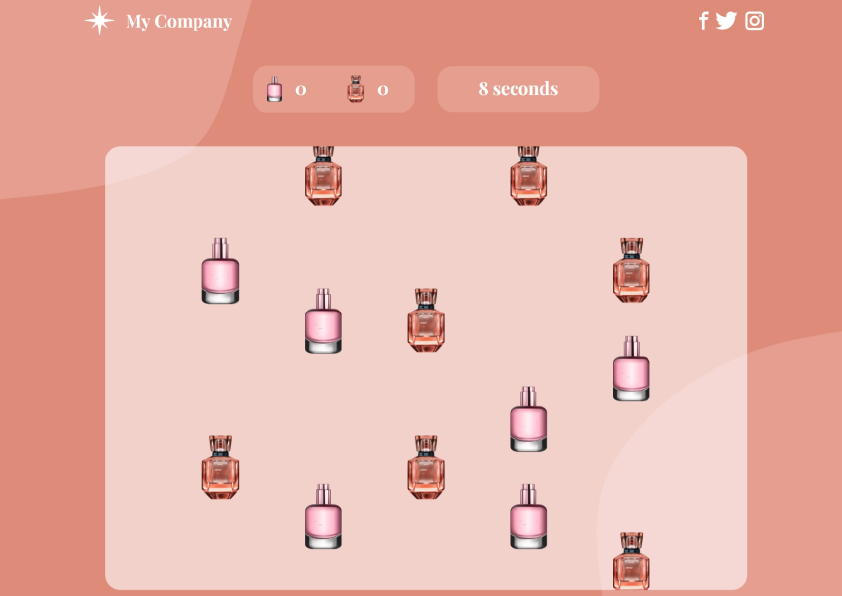
Offer value
Are you trying to make a name for yourself in the beauty industry? The key is to offer your audience valuable content that they will want to engage with and share. This means creating informative, engaging, and visually appealing content that meets your audience’s needs and interests.
To get started with creating content for your brand or business, here are some steps you can follow:
- Conduct market research to gain insights into what topics resonate with your audience.
- Tailor your content to meet their needs while aligning with your brand.
- Focus on creating high-quality content rather than producing large quantities.
- Ensure that your content is well-researched and visually appealing.
Don’t forget to make your content easily shareable by incorporating social media sharing buttons and encouraging your audience to spread the word. By doing so, you can attract and retain customers while establishing your brand as an authority in the industry.
So, what are you waiting for? Start creating valuable content today and watch as your brand’s reputation grows in the beauty industry!
Create a customer loyalty program
You need to create a cult following to stand out in such a competitive industry. Most beauty brands that do so have amazing products that speak for themselves. They are cult beauty products because something about them makes their consumers feel powerful. Their products are transformative, people buy them in bulk and swear by them.
Besides creating stunning products, creating a loyalty program can help create a fan base. Having a program in place keeps your clientele coming back for more. Especially, when you have special rewards that give them discounts or gifts. A loyalty program can boost customer loyalty and increase customer retention.
Moreover, it can help you build a connection with your patrons and engage with them. With a loyalty program, you can create your own secret beauty society where loyal shoppers have access to exclusive items and invites to events. Explore different online customer loyalty programs that can be suitable for your beauty brand’s own program. That way you can successfully maintain your spot in being one of the most loved beauty brands.
Provide personalized experiences
Creating a lasting impression is important if you want to be memorable in the industry. Provide customers with a unique and special experience they will never forget. You can do so by creating experiences that are tailored individually to each customer. It makes customers feel seen and appreciated. Moreover, you are building a meaningful connection and relationship with them.
Some examples of personalization are sending custom messages to customers. Furthermore, rewarding them with discounts on their birthday and recommending relevant products. Additionally, you can do so by sending them individualized content through email marketing. Personalized experiences make them feel important and encourage them to make repeated purchases. It also increases sales, which increases your market share propelling your business into success.
Personalization is KEY to staying memorable in any industry. Check out this blog on website personalization!
Use Interactive Experiences
Are you tired of the same old boring approach to learning about beauty industry marketing strategies? Say hello to Interactive Experiences! These innovative tools are designed to captivate and engage readers by creating immersive learning experiences. The beauty industry is always on the lookout for fresh and innovative products and services to captivate consumers. So, staying ahead of the competition and incorporating Interactive Experiences can be a game-changer.
Here are some Interactive Experiences you can incorporate into your strategy:
1. Guided Selling
Guided Selling provides a seamless online sales experience that functions round the clock. Companies can use tools such as Product Recommenders or Gift Finders to suggest products and help visitors find the right beauty product. Utilize the Beauty Mirror template to recommend products to help them achieve stunning makeup looks. Whether it is the clean girl makeup look or a party glam look, use makeup styles to recommend products.
Try out Dot.vu’s templates below and start engaging with your customers today!


2. Marketing Games
Marketing Games are a great way to create an engaging marketing strategy. For example, combining a game with a product recommender allows users to navigate through game scenarios while receiving personalized product recommendations based on their preferences.
This interactive approach creates a memorable brand experience that encourages engagement and drives conversions. The Beauty Booster template is a fun way to make your customers feel like a million bucks while recommending them products. Make them feel like they have hit the jackpot on beauty with this Marketing Game.


Pro tip: These templates are ready to plug into your mobile marketing strategy—especially if you’re in the beauty business.
3. Quizzes
This is a great example of an interactive element that can be incorporated into the learning experience. Quizzes can help readers test their knowledge and identify areas where they may need to focus their learning.
Help them learn about beauty looks or products that suit their eye shape, lips, skin tone, and face shape. This Drag and Drop Quiz with Rewards template is great for doing so because you can use visuals to educate them.

4. Shoppable Video
Shoppable Videos is an Interactive Experience that allows viewers to make purchases directly from the video, making it an effective tool for boosting sales and enhancing the customer experience. This Shoppable Video template allows you to display details about multiple products such as lipsticks, eyeshadow, or blush. Use it to showcase your beauty ingredients or how your beauty products look on different skin tones.
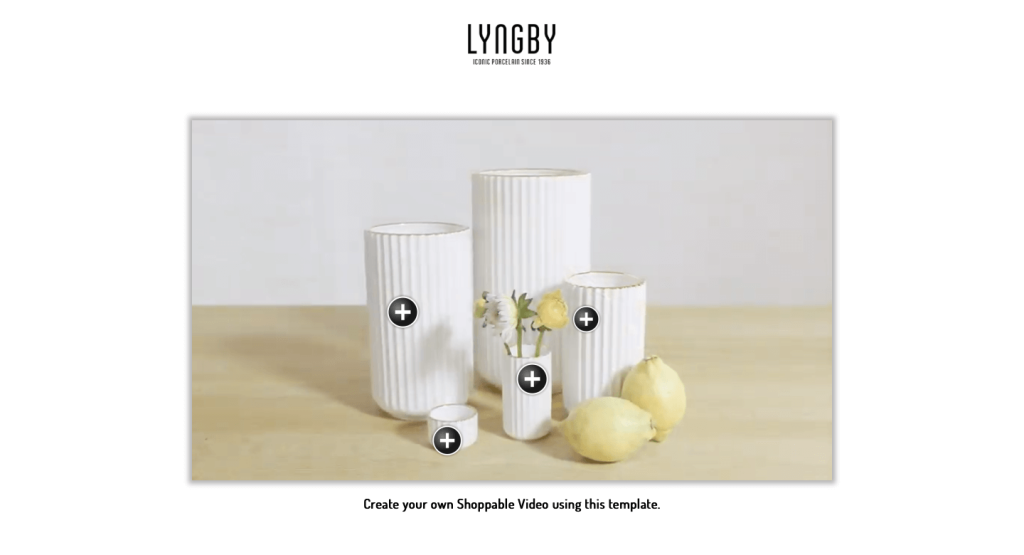
Related: How to create a killer Shoppable Video
5. Hourly Surprises
By offering hourly surprises, such as flash sales, advent calendars or exclusive deals, you can encourage customers to engage with your brand and make more purchases.
This Hourly Surprises template allows you to give out surprises to customers every hour. It is great for holidays like Black Friday, Mother’s Day or Singles Day. Give discounts or rewards to customers to increase your sales or to get rid of old stocks.
RELATED: 10 Best Discount Marketing Strategies That Will Absolutely Increase Revenue
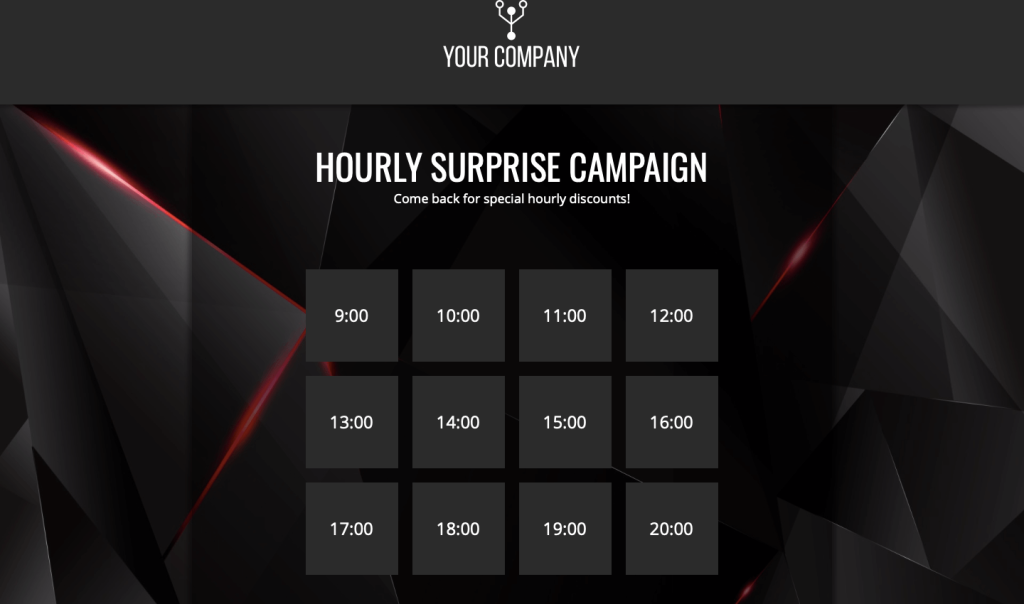
6. Online Advent Calendars
Online Advent Calendars are a great holiday marketing strategy to encourage engagement and drive sales. They offer daily product reveals, limited-time promotions, and special discounts, creating excitement for customers and boosting sales.
Use an Advent Calendar with Scratch Cards template to promote your best-selling products or to reveal and launch your latest products makeup products. Let customers scratch and reveal products with this template or an exclusive discount.

7. Interactive Popups
Interactive popups are a powerful marketing tool to engage website visitors and drive conversions. For example, a product recommender popup or a free sample popup can offer an interactive and personalized user experience that encourages visitors to take action. Make them answer questions so they can find the right gift or make them share with you their contact details in exchange for a gift.


Incorporating Interactive Experiences into your beauty marketing strategy can help make it more engaging and fun.
Related: 12 different types of Interactive Content
Run contests
Running contests can be an effective way to increase engagement and brand awareness within the beauty industry. Contests can also help generate buzz around new products or services and encourage user-generated content. By planning and executing a successful contest, you can boost your brand’s reach and attract new customers.
For example, contests that include giveaways for new product lines or social media challenges. A brand could launch a contest that encourages customers to share their favorite beauty routine on social media using a branded hashtag. The prize could be a gift set of the brand’s latest products.
Interactive Video Quiz contests and Interactive Contests are also popular options for beauty industry marketing.
It is important to set clear goals, select enticing prizes, and promote the contest through a variety of marketing channels if you choose to run a contest. By incorporating interactive elements, such as video quizzes and Interactive Contests, you can make your contest even more engaging and memorable.
Related: How to run an online contest?
Utilize influencer marketing
Influencer marketing has become a popular way for beauty brands to reach their target audience. By partnering with influencers who have a large or small following on social media, brands can increase their visibility and credibility in the industry.
When identifying influencers to work with, it’s important to consider their relevance to your brand and target audience. Look for influencers who align with your brand values and have a following that overlaps with your target demographic. This can include both macro-influencers with hundreds of thousands of followers and micro-influencers with a smaller but more niche following.
When executing an influencer marketing campaign, it’s important to establish clear goals and expectations. Be transparent with influencers about what you’re looking for and what you can offer in return. This can include compensation, free products, or exposure to your brand’s audience.
To increase the chances of a successful campaign, consider working with influencers to create content that aligns with both your brand and their personal brand. This can include product reviews, tutorials, and sponsored posts.
For instance, Sephora’s #sephorawishlist campaign encouraged influencers to showcase their favorite products and share personal stories, which in turn inspired their followers to engage with the brand.

Meme culture
Memes have become a dominant force in social media, shaping conversations and creating a shared cultural experience online. Brands in the beauty industry have taken note of the trend and have started to incorporate memes into their marketing strategies. By using memes, beauty brands can reach younger audiences and connect with them in a more relatable way.
However, incorporating memes into marketing strategies can be challenging, as it requires a delicate balance between humor and authenticity. Brands must be careful not to come across as trying too hard to be “cool” or “hip.” Instead, they need to understand the tone and language of meme culture and use it in a way that is natural and aligns with their brand.
Several beauty brands have successfully integrated memes into their marketing campaigns, creating a viral buzz and increasing engagement. For example, Fenty Beauty has a knack for going viral on Twitter, thanks to their clever use of meme culture. By leveraging current trends and turning them into promotional content, Fenty has not only generated unprecedented levels of engagement but also fostered an environment where customers feel like they’re chatting with a friend.

Remember, beauty industry marketing is not all about products!
With the beauty industry becoming increasingly competitive, it’s essential to look beyond just your products and focus on your marketing strategies. It’s not just about following trends or copying what others are doing. It’s about finding creative ways to engage with your audience and communicate the unique value of your brand. With the strategies discussed in this article, you can take your marketing efforts to the next level and stay ahead of the game.
But don’t stop there. Keep an open mind and try new things, including Interactive Experiences and other innovative techniques. Embrace the power of creativity and remember that your audience is constantly evolving, so your marketing strategies should be evolving too.
So, what are you waiting for? Get started on our 14-day free trial today and start exploring our customizable templates today! With the right approach and a commitment to excellence, your brand can achieve greatness in the competitive world of beauty marketing. Dot.vu been selected as the winner of ‘Best Interactive Content Platform’ in the 2024 Martech Breakthrough Awards and that is because we desire to help businesses transform the way they interact with customers and we have successfully done so.
